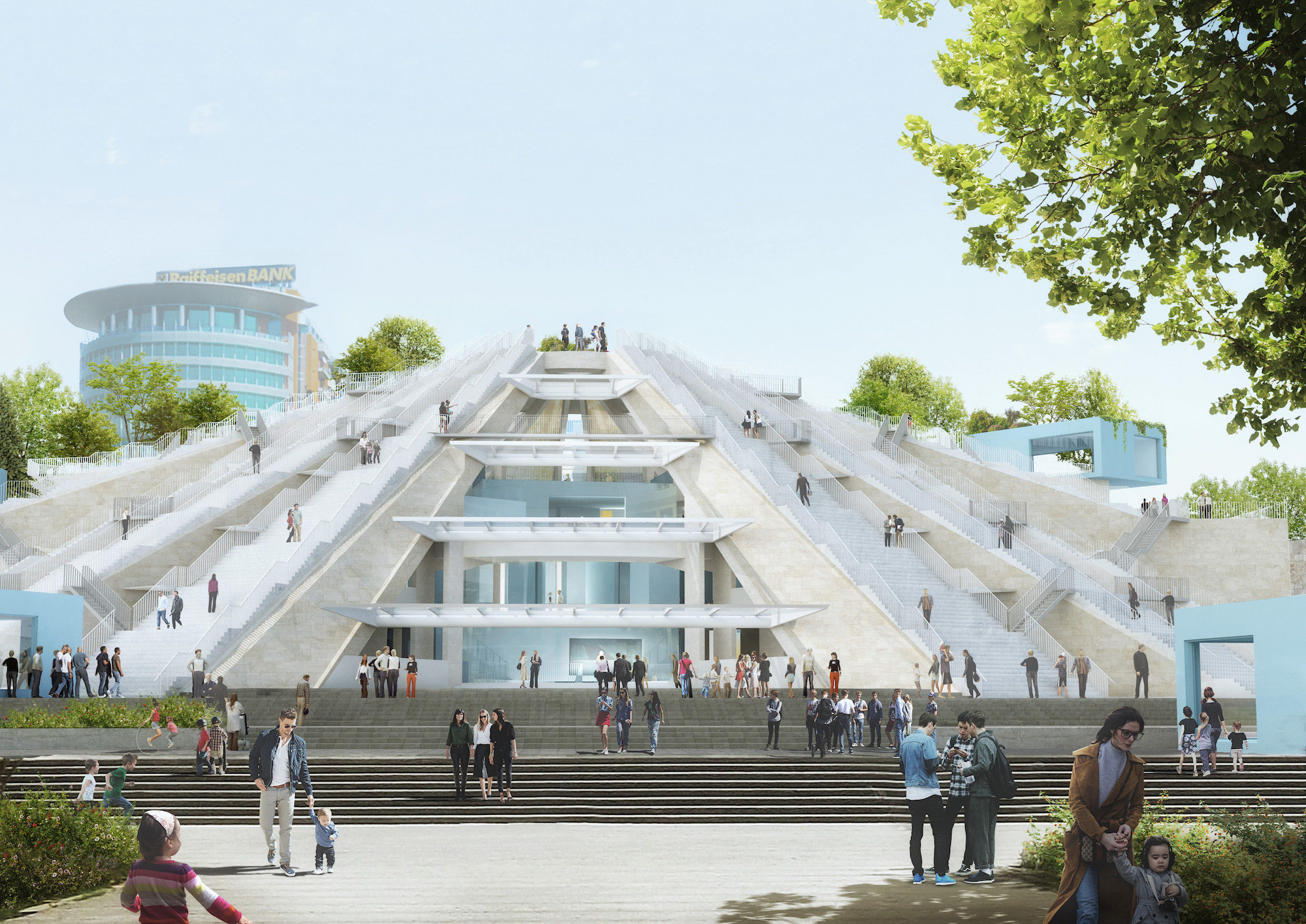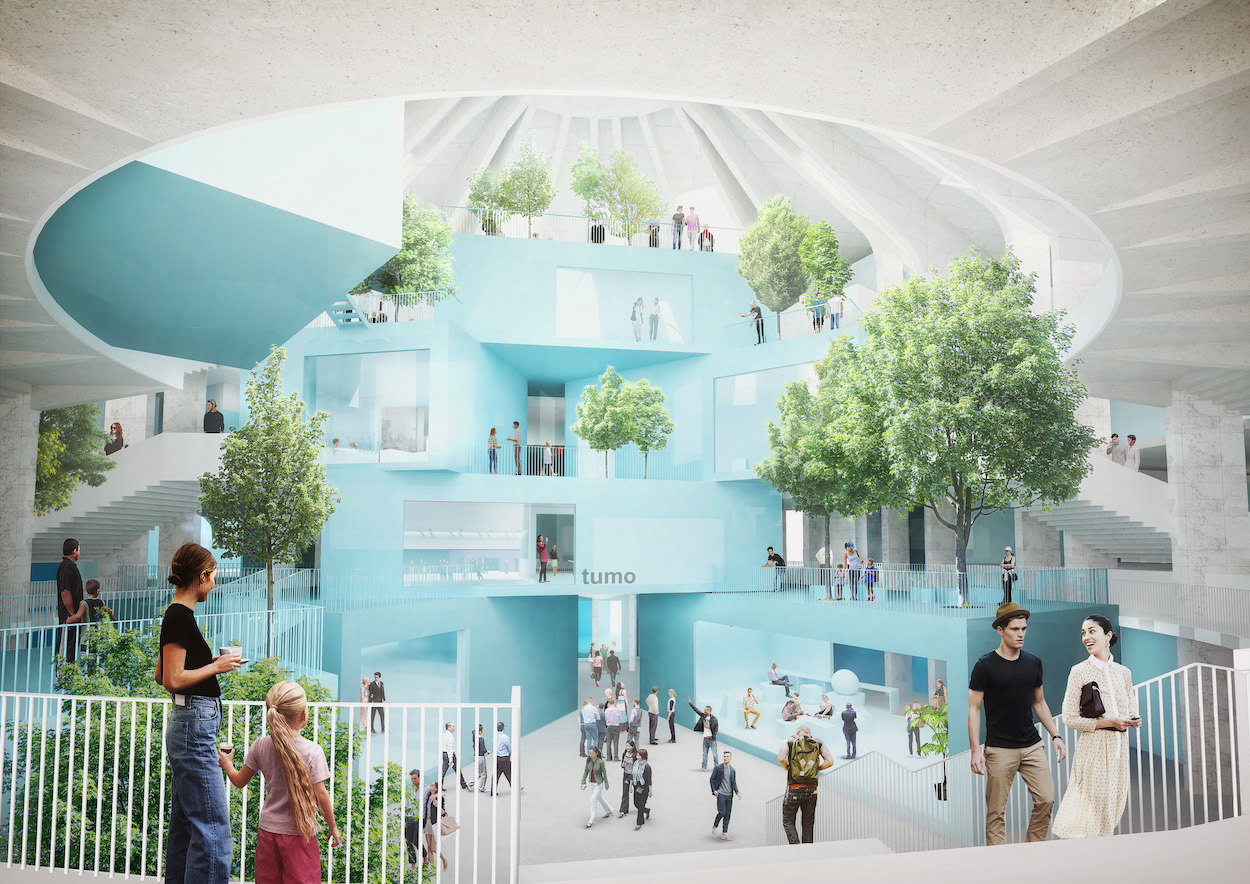The Pyramid of Tirana has weathered a whirlwind of change since first opening in 1988 as a museum dedicated to Albania’s former communist dictator Enver Hoxha. Located in the capital city’s central hub, the Brutalist monument once served as a temporary base for NATO during the War in Kosovo, and more recently as a nightclub and events space. Albanian youth reclaimed the concrete structure and have been using it as a hangout spot and canvas for graffiti, often scaling it after dark to slide down its slopes. Over the years, plans to renovate the structure only partially materialized, and it’s currently sitting hermetically sealed and inaccessible to the public.
Unlike other deteriorating relics of Brutalism, the Pyramid of Tirana will soon receive a new lease on life. MVRDV plans to radically rethink the building by transforming it into a vibrant cultural hub. “Working on a Brutalist monument like the Pyramid is a dream,” MVRDV founding partner Winy Maas said in a statement. “I immediately saw its potential, and that it should be possible to make it even more of a people’s monument instead of demolishing it.”


